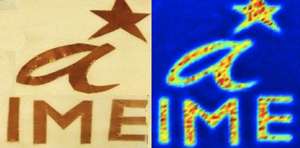Terahertz technology: Seeing more with less

Terahertz technology is an emerging field that promises to improve a host of useful applications, ranging from passenger scanning at airports to huge digital data transfers. Terahertz radiation sits between the frequency bands of microwaves and infrared radiation, and it can easily penetrate many materials, including biological tissue. The energy carried by terahertz radiation is low enough to pose no risk to the subject or object under investigation.
Before terahertz technology can take off on a large scale, however, developers need new kinds of devices that can send and receive radiation in this frequency range. Worldwide, electronic engineers are developing such devices. Now, Sanming Hu and co-workers from the A*STAR Institute of Microelectronics (IME), Singapore, have designed novel circuits and antennas for terahertz radiation and efficiently integrated these components into a transmitter–receiver unit on a single chip. Measuring just a few millimeters across, this area is substantially smaller than the size of current commercial devices. As such, it represents an important step towards the development of practical terahertz technologies.
Hu and his co-workers based their terahertz design on a fabrication technology known as BiCMOS, which enables full integration of devices on a single chip of only a few cubic millimeters in size. "Currently, commercial products for terahertz technologies use discrete modules that are assembled into a device," explains Hu. These module-based devices tend to be considerably more bulky than fully integrated systems.
"In a commercial terahertz transmitter–receiver unit, the central module alone measures typically around 190 by 80 by 65 millimeters, which is roughly 1 million cubic millimeters," says Hu. The novel design of Hu's team unites the essential components of a terahertz device in a smaller two-dimensional area of just a few millimeters along each side. According to Hu and his co-workers, this compact device paves the way towards the mass production of a fully integrated terahertz system.
As the next step, the team will use the IME's cutting-edge technologies to build more complex structures composed of several two-dimensional layers, which will be based on their new designs. Although the team is not pursuing any specific applications, their devices potentially open up a wide range of possibilities. These include wireless short-range transfers of data sets—the content of a Blu-ray disc could be sent in as little as a few seconds, for example—high-resolution biosensing, risk-free screening of patients and passengers, and see-through-envelope imaging (see image).
More information: Hu, S. et al. A SiGe BiCMOS transmitter/receiver chipset with on-chip SIW antennas for terahertz applications. IEEE Journal of Solid-State Circuits 47, 2654–2664 (2012). ieeexplore.ieee.org/xpl/articl … jsp?arnumber=6301781
















